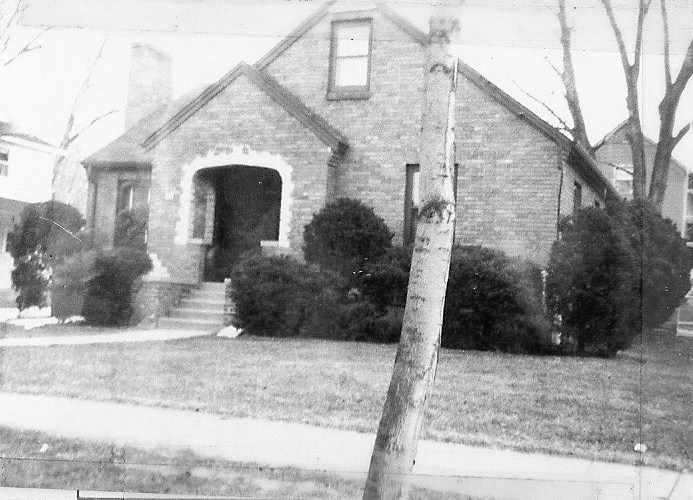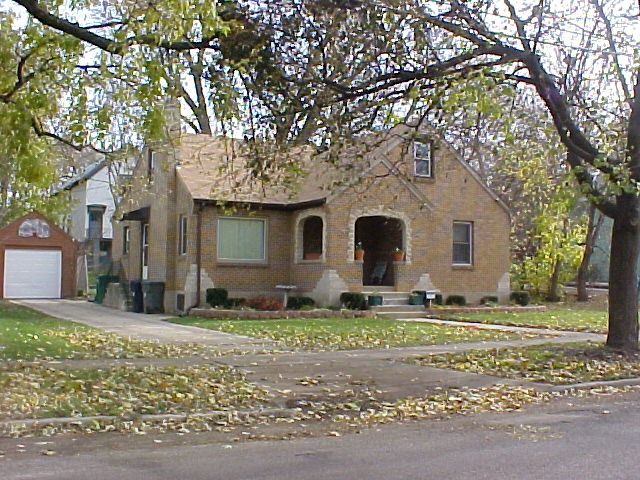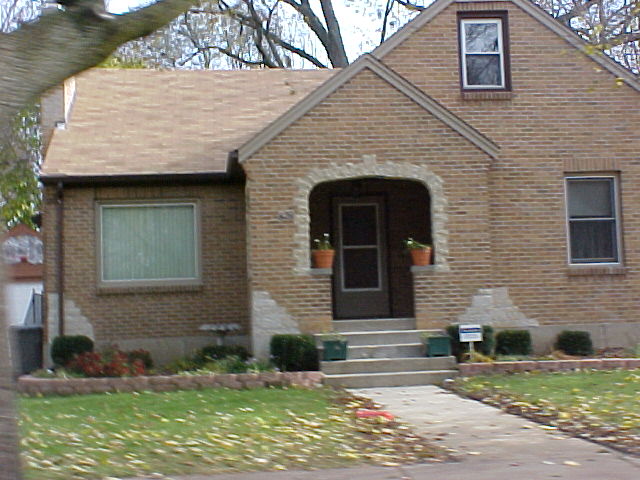429 RAYMOND STREET
HISTORIC SIGNIFICANCE
In the early 1930s, Roy Whipple purchased property on a lot along Raymond Street. The aftermath of Black Tuesday and the following Great Depression caused longer economic harm than initially imagined, evidenced by many drastic vicissitudes of wealth and buying power. Whipple faced such a fate himself, and had to go through a difficult foreclosure process. The first owner of the actual home was shown in the 1939 Elgin City Directory, listed to a Gottfried Frutig.
Frutig worked for the McGraw Electric Company, later retiring with the Illinois Tool Works company. Gottfried and his wife, Suzanne, lived in the home from its construction until a widowed Suzanne sold it in 1971.
ARCHITECTURAL SIGNIFICANCE
429 Raymond is an example of the Tudor Revival style. Some of common Tudor Revival features seen at 429 include steeply pitched roof; dominant front gable with intersecting cross gable; decorative brickwork around window crowns and doorway entrances, particularly those with arched emphasis. Multi-paned grouped windows were original to the main façade window, another characteristic indicative of the style but no longer seen today.
The Elgin National Watch Historic District: A Summary and Inventory, lists 429 Raymond as contributing to the historic significance of the area.
TIMELINE OF PREVIOUS OWNERS
Sources: 2002 Heritage Plaque Application; Audio: TextAloud





